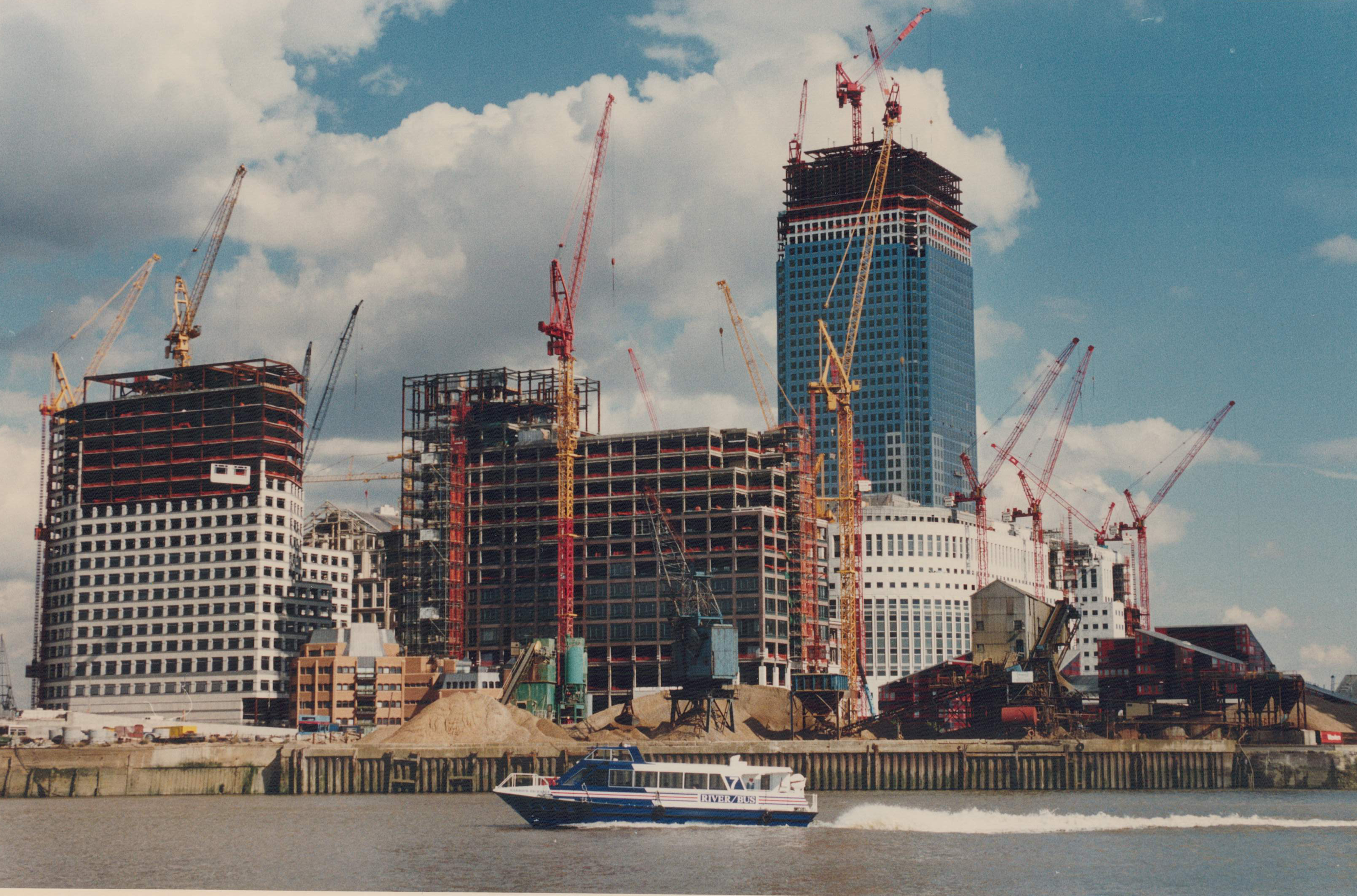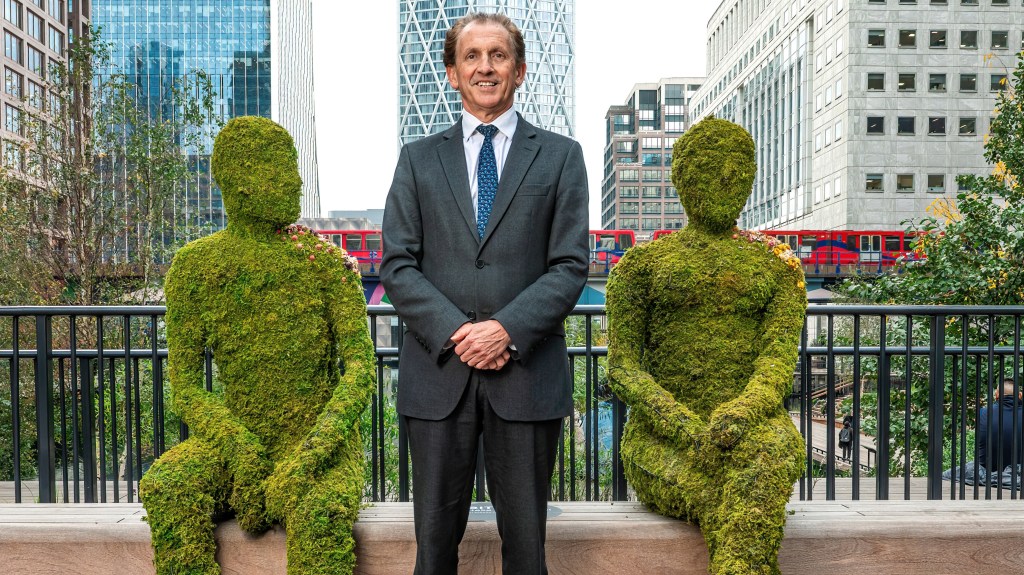Canary Wharf Evolves: A Destination for Work, Living, and Leisure
In the Nineties, Sir Nigel Wilson was not particularly impressed with Canary Wharf when he first visited. Paul Reichmann, the key figure behind the development, once attempted to recruit him while Wilson was at Stanhope, but he declined multiple times.
“I appreciated the people but the product didn’t resonate with me,” Wilson explains. “The retail spaces were beneath ground level, and the towering structures were primarily dedicated to financial services. There was a lack of retail, entertainment options, and dining establishments, and the DLR often underperformed. It didn’t align with my vision for the place.”
This summer, Wilson assumed the role of chairman at Canary Wharf Group, which controls much of the east London business district, presenting him with an opportunity to shape its future.

Having led the FTSE 100 insurance company Legal & General for over a decade, Wilson takes over from Sir George Iacobescu, who played a pivotal role in transforming Canary Wharf from a rundown dock to a prestigious global business center.
His leadership arrives at a critical moment for the district, which has experienced significant tenant turnover in recent years, with notable firms like HSBC and Clifford Chance relocating back to the City of London.
These departures, coupled with ongoing discussions around hybrid work models, have sparked concerns regarding the future viability of office spaces, particularly affecting Canary Wharf, where about 17% of office space is currently unoccupied compared to less than 6% in 2017, according to CoStar analysis.
Despite his initial skepticism toward what he terms “Canary Wharf 1.0”, Wilson, seated in a boardroom on the 30th floor of One Canada Square, expresses optimism about the area’s trajectory. Since Shobi Khan became chief executive five years ago, thousands of residential units, schools, parks, and supermarkets have been developed.
Additionally, Wilson refers to the area as “Canary Wharf 3.0” and anticipates around 70 million visitors this year, a 33% increase from pre-pandemic levels, with most of them coming for leisure purposes rather than work.
He reacts strongly to a recent comment from his former boss, developer Sir Stuart Lipton, who described the Wharf as “sterile and lacking the vibrancy found in other parts of London” in the Financial Times. Wilson counters, “It certainly doesn’t feel sterile to me. There are individuals kayaking, paddleboarding, biking, and running here. The energy is vibrant, and it’s becoming a hub for younger generations who appreciate it and actively engage with the community here.”
Part of Wilson’s mission involves reshaping perceptions about Canary Wharf, especially among those who may recall their experiences in the Nineties and Noughties.

“Many influential figures in the City once worked for banks in that earlier version of Canary Wharf,” he elucidates. “They were the ones enduring the commute on the DLR during harsh weather and dealing with a lack of entertainment options. Their impressions are rooted in that initial phase. However, the reality of Canary Wharf 3.0 is perceived more clearly by the youth who now live, work, and play here.”
Wilson believes the impact of tenant departures has been exaggerated. In a presentation reminiscent of his past work at McKinsey, he highlights that Barclays, JP Morgan, Citi, and Morgan Stanley have all reaffirmed their commitment to staying in the area, while the digital bank Revolut is in the process of setting up new headquarters.
However, altering perceptions isn’t Wilson’s only obstacle. He acknowledges that some of the original structures have not aged well, asserting the need for ongoing evolution in the district. “Initially, we found them exhilarating, but now hindsight shows that newer buildings likely possess more architectural allure,” he noted.
Wilson anticipates that it may take 10 to 20 years for Canary Wharf to fully re-establish its identity. Even then, constant evolution will be necessary.
He identifies the establishment of Eden Dock, adjacent to the former Reuters headquarters, as a testament to the transformative changes underway, aimed at enhancing the area’s walkability. CWG has collaborated with the Eden Project to initiate what is termed a “green spine” throughout the estate.
In recent times, CWG has also aimed for diversification in its tenant mix, not just catering to financial firms. Khan envisions creating a world-class life sciences center, with construction underway for what will become Europe’s largest laboratory.


Wilson expects continued diversification throughout his tenure, regardless of how long that may be. “Will we see an increase in creative industries? Yes. More leisure opportunities? Yes. More life science companies? Yes. Closer ties with universities? Absolutely,” he stated. Conversely, traditional office space may diminish as a percentage of the overall rental landscape.
His ultimate aspiration is for Canary Wharf to evolve into a “city within a city”—a diverse and vibrant place for living, working, and recreation. “It’ll be environmentally friendly and a stark contrast to the earlier, harsher iterations of Canary Wharf.”
He acknowledges that this transformation will require significant time and investment, with refurbishing a single building potentially costing hundreds of millions.
With Brookfield, a Canadian investor, and the Qatar Investment Authority backing CWG, they have the financial resources, but the key question remains whether they possess the patience to see the next phase of Canary Wharf’s transformation through.
Wilson concludes, “We have strong support from our major shareholders, providing us with a solid foundation. We possess ample capital, and our brand is exceptional. While we do have some spaces that need modernization, London is facing similar challenges across the board. This is the leading regeneration project in Europe, and I’m eager to embrace the challenge ahead.”




Post Comment